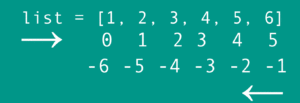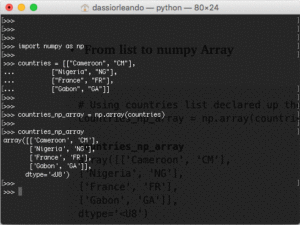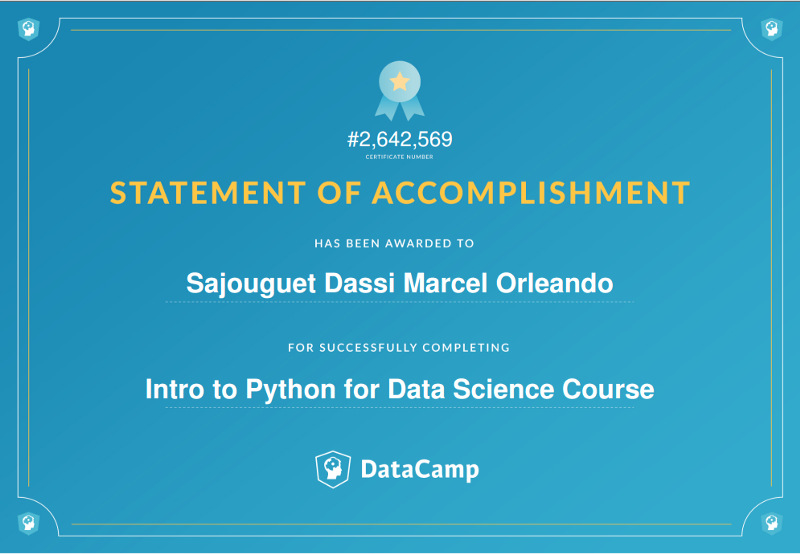Before The Outset
I’ve never been good enough to make complex manipulations on data but to writing algorithms and build web applications a big Yes.
Notes:
→ This is not a guide to be a full Data Science Engineer, I’m just sharing what I started with in this field.
→ This is not the unique path too.
Instead, you can consider it as one start study plan for those coming from Software Development and want to be Junior Data Science engineer.
The voice of a beginner for others beginners. 🙂
What is Data Science?
Data science is a multidisciplinary blend of data inference, algorithm development, and technology in order to solve analytically complex problems.
"We have lots of data - now what?" (How can we unlock real value from our data?) Data science is a multidisciplinary…datajobs.com
For me, it is all things we are doing with data that can solve some problems and come out with business value or growth.
Kind of Data
As we said up there it is about manipulating data the whole time, but what kind of data can we manipulate?
On the internet or large enterprise applications there are a lot of data coming from different sources as social media, call to actions, simple forms, log data, transactions, emails …
All things we are doing online or others place required the most times that we input data, these data can be in different types:
- Text
- Photo
- Audio
- Video
- …
Also in different formats:
- Structured data: those with a certain degree of organization for further querying and/or analysis. As the one stored in Relational Database Management System or in Json, Xml, Xls files.
- Semi-structured and Unstructured data: easy to understand(not formatted), the opposite of the first.
Programming languages for Data Science
There are a lot of languages to Data Sciencing(hahaha), some of them are very popular and more used than others.
There are a few: R, Python, Java …
Intro to Python for Data Science
I start Data Science with a free and very educative certification available on www.datacamp.com, it helps me to introduce myself on this field to be able to start in a new way in my career.
The course
Learn Python for Data Science - Online Course
DataCamp's Intro to Python course teaches you how to use Python programming for data science with interactive video…www.datacamp.com
What I learned there
- Manipulating python list in deep
- Manipulating Numpy array
- Subsetting Numpy array
- Subsetting 2D Numpy array
- Simple exploration of data
- Basic statistic
Practice
There are a lot of exercises and XP I earned there on this free course, I will show you some examples of things I learn there, but impossible to put all here, it is not the intent of this post and it is too much:
- 4700 XP Earned
- 1 Courses Completed
- 57 Exercises Aced
1. Python List
- Create a list:
mySimpleList = [12, 43, 54, 34, 90] #Simple list with same type
myWeirdList = ['a', 43, 54, 'c', 90] #Different types of items
- Print a list
print(myList) # Knowing that the list is already created
- List of list
countries = [["Cameroon", "CM"],
["Nigeria", "NG"],
["France", "FR"],
["Gabon", "GA"]]
- Type of a variable
To print the type of variable, just hit this:
print(type(myVariable))
- Index

list[4] = list[-2] = 5
- Subsetting list
A subsetting always return a list. Here the first index is included in the result and the last is not.
list[1:4] = [2, 3, 4] # From index 1 to index 3 included
list[:4] = [1, 2, 3, 4] # From the start to index 3 included
list[1:] = [2, 3, 4, 5, 6] # From index 1 to the end
2. Numpy Array
- Install Numpy: pip3 install numpy
- Import Numpy
There is some manner to import python package/function, let’s focus on these two for this post:
import numpy # Here we will address numpy array with numpy.array
import numpy as np # Address numpy array with np.array
- From list to numpy Array
# Using countries list declared up there
countries_np_array = np.array(countries)

- subsetting np array
countries_np_array[:, 1] = array([‘CM’, ‘NG’, ‘FR’, ‘GA’])
# Return all country code, all rows and the second column
age_array = np.array([2, 4, 6, 8])
age_selector = age_array >= 4
# result array([False, True, True, True], dtype=bool)
# Now use this selector to index the new array
print(age_array[age_selector])
# result array([4, 6, 8])
Note: Numpy does not allow multiple types on an array and will force all type to be same.
age_array = np.array([True, 4, False, 8])
print(age_array)
#result array([1, 4, 0, 8])
- Operation over collections
age = [2, 4, 6, 8]
div = [2, 2, 2, 4]
age_array = np.array(age) # Numpy array of ages
div_array = np.array(div) # Numpy array of divs
print(age/div)
# divide python list
# Traceback (most recent call last):
# File “<stdin>”, line 1, in <module>
#TypeError: unsupported operand type(s) for /: ‘list’ and ‘list’
print(age_array/div_array) # Will compute without issue on each item
array([ 1., 2., 3., 2.]) # result
Data Science deals with a lot of information to analyze, sort and do others things on, then it needs to do mathematical operations over collections quickly.
3. Little stats with Numpy
- Average: np.mean(your_numpy_array_or_axis)
- Median: np.median(your_numpy_array_or_axis)
- Standard Deviation: np.std(your_numpy_array_or_axis)
Supposed we have an array representing the grade of 3 students of a class in two courses(French and English):
import numpy as np
student_grades = np.array([[12, 16], [15.5, 9], [5, 16]])
# Average of student's grade in French
# Here we select all the rows and the french axis(the first column)
french_average = np.average(student_grades[:, 0])
print(french_average)
# result: 10.833333333333334
# Standart deviation of student's grade in English
# We select all the rows and the english axis(the second column)
english_std = np.std(student_grades[:, 1])
print(english_std)
# result: 3.299831645537221
Got my first certification in this field 🙂
There are also a lot of interesting community courses available but non-certifying:
Free Data Science and Analysis Training Courses | DataCamp
Are you looking to build your data analysis skill set? Try one of our free open courses and see why over 460,000 data…www.datacamp.com
Let’s Work together

Ping me if you are looking or you would like to have a partner to study and master Data Science with, I’m available for peer learning.
Conclusion
I think that start by practice using a simple and detailed course with a good scope is worth it for learn new things.
Thrilled to have it and excited to learn more using online resources and others posts about Data Science. I would also like to know how you started or which advice can you give to a beginner like me.
Thanks for reading this post, share if you enjoyed it.
Follow me on Facebook, Twitter and Medium.
Cheers!



